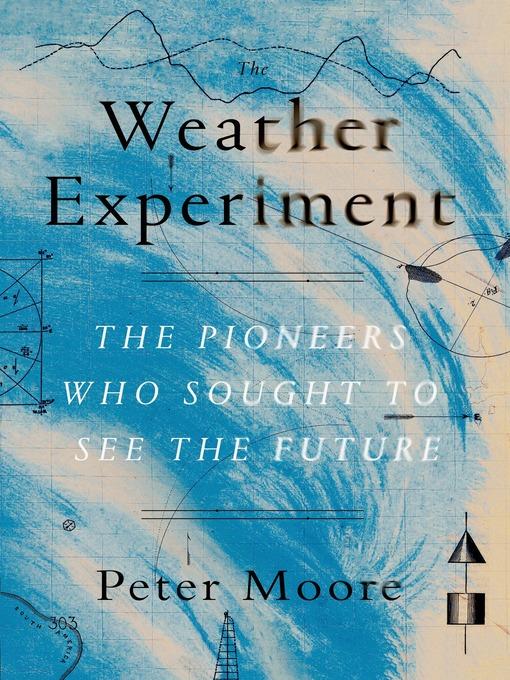
The Weather Experiment
The Pioneers Who Sought to See the Future
کتاب های مرتبط
- اطلاعات
- نقد و بررسی
- دیدگاه کاربران
نقد و بررسی

April 27, 2015
Moore (Damn His Blood) examines the lives and works of 19th-century men of science as they developed the burgeoning field of meteorology in this excellent history. He proceeds more or less chronologically, concentrating primarily on the contributions of Britons, such as Francis Beaufort, developer of the scale of winds; noted landscape painter John Constable; Astronomer Royal George Airy; and James Glaisher, who was famed for his balloon ascents into the upper atmosphere. A few Americans also feature here: Benjamin Franklin and his lightning experiments, storm theorist James Espy, and telegraph inventor Samuel F.B. Morse. Moore’s true hero is Robert FitzRoy, a tragic figure who is mostly remembered today as the captain of the Beagle on Charles Darwin’s famous journey. FitzRoy’s contributions to meteorology came later in life when he began the first systematic forecasts of weather, which were based on reports from around the British Isles received via telegraph. Along with the many brief biographies and sketches of scientific squabbles, Moore also weaves in interludes describing a day of weather. This is a worthy investigation of the history of weather forecasting as seen through a British lens.

April 15, 2015
In 1800, no one had a clue about what controlled "the heavens," which made the unlikely science of meteorology one of the most remarkable accomplishments of the 19th century. At the turn of the century, the unpredictability of weather was often devastating. Storms tore through cities and upended ships without mercy. These conditions were perfectly suited to the mostly divine theories about what controlled the weather. Despite the progress in fields including astronomy, geology, and physics, no one had yet unlocked the mysteries of the skies. This sets the scene for the arrival of an eclectic group of intrepid observers committed to decoding the weather. Moore (Damn His Blood: Being a True and Detailed History of the Most Barbarous and Inhumane Murder at Oddingley and the Quick and Awful Retribution, 2012) writes about this band of ad hoc scientists with brio, and it's hard not to be awed and charmed by their united "quest to prove that earth's atmosphere was not chaotic beyond comprehension, that it could be studied, understood and, ultimately, predicted." This diverse group shared a naturalist bent, and they included adventurers, sailors, engineers, chemists, inventors, and artists. The author argues that perhaps the most notable figure was Robert FitzRoy, who famously captained Darwin's Beagle. An enigmatic and complex man, he went on to forge the analytical and social foundations of meteorology. By the 1860s, a vocabulary that categorized weather patterns had begun to codify, and the first storm warnings and weather forecasts were introduced. Enhanced by a revolutionary new technology, the telegraph, the weather shifted from an experience that always occurred in the present to a hotly discussed topic that transcended time and place. Moore complements chapters of readable scientific history with lyrical interludes reminding us that, even when deconstructed, the harmonies of the natural world cannot be contained. Detailed and insightful, this book is as relevant as ever in this era of rapid climate change.
COPYRIGHT(2015) Kirkus Reviews, ALL RIGHTS RESERVED.

May 1, 2015
Whatever we might think of weather forecasts, it's hard to imagine a time before they existed. Moore writes about just such a time, in the 1860s, when artists, astronomers, mathematicians, weather diarists, adventurers, and others tinkered with ideas to explain weather and maybe even predict it. Their efforts to give some warning of dangerous weather conditions laid the foundation for modern forecasting. At the time, it was widely believed that foul weather was caused by evil spirits or God's wrath, and scientific explanations of weather were as unwelcome as Darwin's theory of evolution. Moore chronicles missteps and advances, experiments on Irish hilltops and the streets of Paris, trials with windmills and telegraph towers, and stormy voyages across the Atlantic and the Caribbean. National rivalries blossomed, egos and theories clashing as fiercely as the storms. Among the fascinating people profiled: landscape artist John Constable, meteorologist Thomas Forster, and Robert FitzRoy, captain of the Beagle, on which Darwin voyaged for nearly five years. But it was Samuel Morse, inventor of the telegraph, who provided the crucial technology needed to demonstrate the value of forecasting.(Reprinted with permission of Booklist, copyright 2015, American Library Association.)

























دیدگاه کاربران